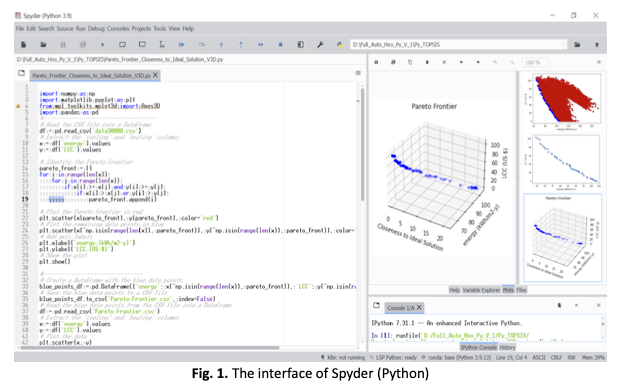Residential Building Design and Optimization in Arid Climates using Multiple Objectives and ANN-GA
DOI:
https://doi.org/10.37934/arfmts.110.2.1431Keywords:
Building, energy saving, LCC, TRNSYS, TOPSISAbstract
Residential buildings in arid regions, such as South Algeria, are responsible for a considerable portion of the total electrical energy consumption, surpassing 60%. To tackle this challenge, this research proposes a novel multi-objective approach aimed at designing typical residential buildings. This approach combines the utilization of a Genetic Algorithm (GA) optimization technique with an Artificial Neural Network (ANN) model, implemented using the Python programming language and integrated with TRNSYS software. The performance of the ANN model is thoroughly evaluated and validated using the TRNSYS software. The integration of Python and TRNSYS facilitates the generation of training datasets for the ANN model. This co-simulation framework provides a powerful tool for accurately estimating energy consumption and life cycle costs (LCC). The results obtained through the TOPSIS-based analysis reveal a remarkable reduction in cooling and heating energy usage, up to 51.43% and 98.97%, respectively, when compared to the basic scenario.
Downloads
































